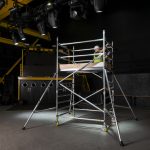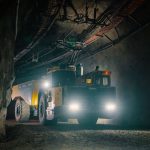 Waste management is now a key part of any sustainability project and Lumicom’s Ernest Magog explains the vital role of disposing of end of life lighting products. In order to reduce its environmental impact an organisation needs to pay just as much attention to its waste management as it does to the more high profile issues such as energy consumption. Waste that is sent to landfill obviously has a negative effect on the environment, whereas any waste that is re-used or recycled has a positive effect.
Waste management is now a key part of any sustainability project and Lumicom’s Ernest Magog explains the vital role of disposing of end of life lighting products. In order to reduce its environmental impact an organisation needs to pay just as much attention to its waste management as it does to the more high profile issues such as energy consumption. Waste that is sent to landfill obviously has a negative effect on the environment, whereas any waste that is re-used or recycled has a positive effect.
Regardless of whether the waste results from everyday building maintenance, or is generated by a refurbishment project, it needs to be dealt with responsibly and in compliance with legislation such as the WEEE (Waste Electrical and Electronic Equipment) Directive. In the latter case, lighting products are amongst the most challenging of electrical waste items to deal with. This is because each luminaire is made of various components that need to be dealt with separately, which has implications for waste management on-site.
However, with proper planning, compliance can be relatively straightforward and can be divided into several key steps.
A step in the right direction
The first step is to identify just who is responsible for disposal. The WEEE Directive divides waste into two main categories. There is historic waste, installed before 13th August 2005, and future waste, installed after that date. Future waste is marked with a crossed out wheelie bin to indicate that it cannot be consigned to the general landfill waste stream.
With historic waste, the producer of any replacement equipment is responsible for facilitating an infrastructure that will accept historic waste. In the case of future waste, it is the producer of the discarded waste that bears this responsibility. As indicated above, managing this is easier when dealing with compliance schemes that represent many manufacturers.
 The next step is to separate the components of the old fittings into separate waste streams as the lamps and any batteries from emergency lighting need to be disposed of separately. Discharge lamps (fluorescent, metal halide, sodium, mercury vapour) are classified as hazardous waste, because of their mercury content, and need to be stored on-site in compliance with the Control of Substances Hazardous to Health (CoSHH) Regulations.
The next step is to separate the components of the old fittings into separate waste streams as the lamps and any batteries from emergency lighting need to be disposed of separately. Discharge lamps (fluorescent, metal halide, sodium, mercury vapour) are classified as hazardous waste, because of their mercury content, and need to be stored on-site in compliance with the Control of Substances Hazardous to Health (CoSHH) Regulations.
In a project where there are around 1,000 luminaires being disposed of, the site will be eligible for a skip, which will be placed on-site for 14 days free of charge – so scheduling of the project is important. For fewer luminaries, or if there is insufficient space, site operators are able to download a delivery note from www.lumicom.com and take this with the luminaires to the nearest collection point, so they are not charged for using the facility. The nearest collection point can be identified by entering the postcode on the search facility on the website.
Emergency lighting batteries
Similar attention to detail has been paid to the disposal of batteries used in emergency lighting products, which have been covered under waste disposal regulations since January 2010. Again, an accredited recycling infrastructure has been put in place to help contractors dispose of the batteries that are removed during maintenance and refurbishment projects. It is also hoped that by developing such a scheme, the industry will ensure that industrial nickel cadmium (NiCd) are not included in a plan to ban these batteries for general use.
Paper trail
Any activities related to legislative compliance need to include a comprehensive audit trail to prove that appropriate procedures have been followed. Even when the ultimate responsibility lies elsewhere, there is still an onus on the building operator and/or project manager to ensure that accredited waste contractors have been used. Thus, any company acting on behalf of the compliance scheme should issue a receipt to the disposer. Ultimately this information will be submitted to the Environment Agency by the compliance scheme.
Planning ahead
Since the WEEE Directive was introduced, thousands of lighting products have been diverted from landfill and recycled and, along the way, the organisations involved have learnt some important lessons. For example, it has become apparent that there is greater complexity in projects where luminaires from a number of different manufacturers are used. If all of those manufacturers are members of the same compliance scheme there’s no problem because there is still a single point of contact. However, if they are members of different schemes, then each scheme may have to be dealt with separately, increasing the volume of paperwork, telephone calls, skips etc.
As a result, many specifiers are now thinking ahead and sourcing their luminaires from manufacturers that belong to the same scheme. In this way they address the needs of the end client by making disposal at the end of life more straightforward.
Taking tighter control of waste is clearly a very important issue that makes a positive contribution to reduced environmental impact and the carbon footprint. Putting it into practice effectively is largely a matter of good forward planning, understanding the waste that will have to be dealt with and teaming up with most appropriate compliance scheme.



